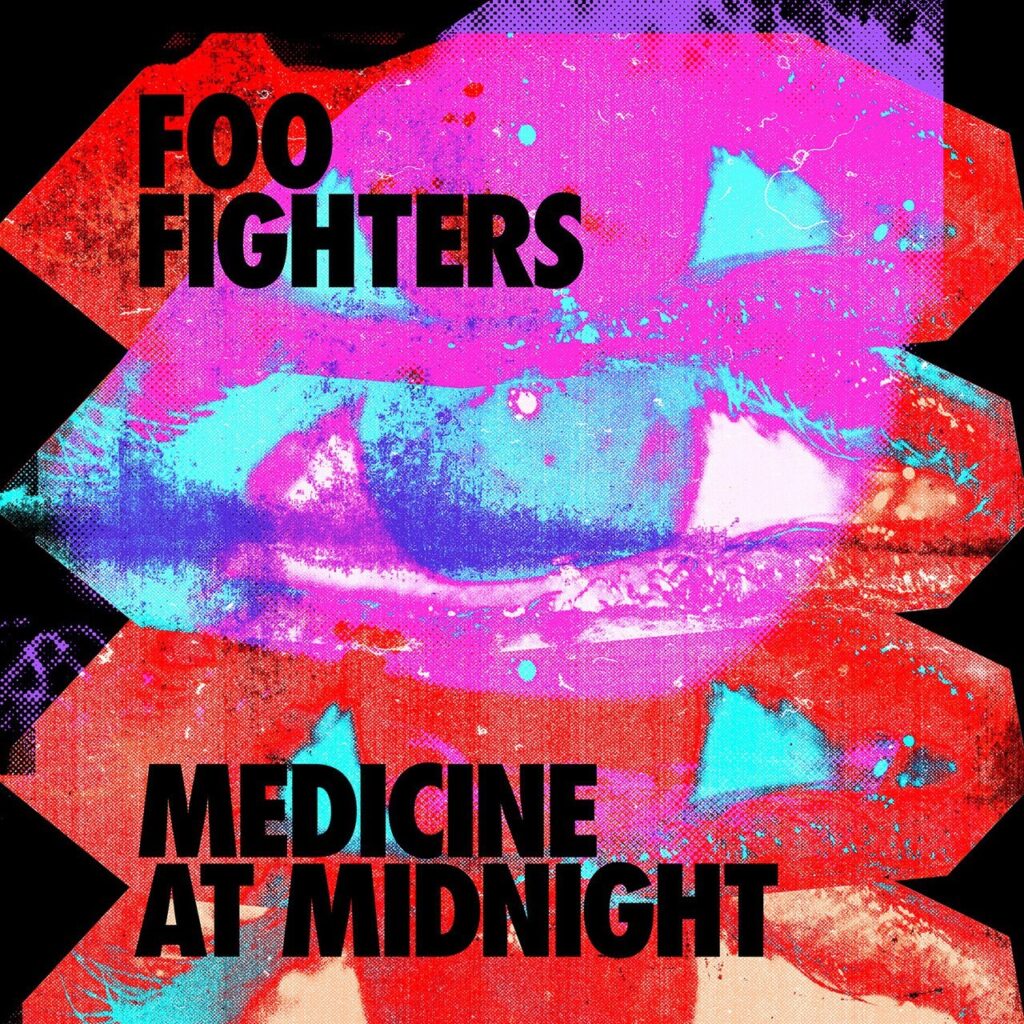They Have Come to Fight off the Foos Again

Review by Shelby Marler
Ah, the good ol’ Foo Fighters.
Their 1997 album, The Colour and the Shape represented the essence of youth optimism and profundity for many of us who grew up in the 90s and 00s. This album is a sunroof opener that makes the hand go ham on the volume dial, so that there’s too much energy to be contained in the space of your high school beater. That energy’s not just with you and your friends sipping on sweating summer slurpees, but with everyone in the vicinity of your spontaneously mapped route. It is epic. It is effortless. It is inspiring.
When the world was in need of someone to get rid of the foos, this album came just in time to answer our call for help, and it came in the form of an anthem.
For those who don’t know who in the world I’m talking about, let me give you a crash course. The Foo Fighters is a six-man alternative rock band that began as a one-man project in 1994 with former Nirvana drummer Dave Grohl following the dissolution of the iconic grunge band. Since then, the band has grown to win 12 Grammy Awards, selling over 12 million copies of their albums as of 2015. If you want a reference as to what kind of alternative music you’re listening to with these guys, think Red Hot Chili Peppers or Queens of the Stone Age. That classic 90s rock is the mantra of this UFO term named band.
Their classic song “Everlong,” for example, from that previous album, although it is not a particularly sad song, always brings me to tears because of what it succeeds in representing – something exciting yet nostalgic in its robust execution of dominant chords. It has the strength to imprint itself on the once blank slate of memory forever.
My boyfriend Braden and I have bonded over the likes of Rush and the Foo Fighters, and he even related the passionately romantic lyrics of “Everlong” to his own profound feelings for me. “Walk” from Wasting Light was my anthem of hope and optimism – looking forward towards a new future with new opportunities awaiting my youth, and “Learn to Fly” from There is Nothing Left to Lose was my personal graduation song (despite it not being my official high school graduation song) – and the first song of theirs I heard during a playthrough on the Rock Band game.
This is the power of the Foo Fighters, so much so that, years after their release, some of their best work remains relevant and poignant today, even as musical trends have moved away from this alternative form of rock. However, since Wasting Light, not much has come to light from the band, and I assumed that this would be the last I heard from them. It was only natural, then, that I was pretty surprised when I heard from Braden that he was heading to West Edmonton Mall on the day the new Foo Fighters album was going to come out, to buy the vinyl from Sunrise Records. And so I followed suit to see if I would be moved once again the way I was moved as a young teenager – that this hiatus has allowed the band to evolve their style to a whole new level.
This album is a short and sweet nine-tracker, available in either vinyl, CD, or through streaming on Spotify. When I first saw the cover, I was immediately reminded of the famous grunge band Alice in Chains’ Facelift cover; the Foo Fighters channel psychedelic rainbow mania, with a peering eye washed in a filter of high contrast, making everything stand out in a piercing manner.
A nod, perhaps, to their grunge origins? Since the Foo Fighters have mostly kept a somewhat muted and pseudo-realist style to their covers throughout their career, this is a fresh introduction to the new collection and got me pumped to get the rockin’ started.
For the music itself, the band still seems particularly privy to the styles of the 80s and 90s in this new album. Unfortunately, this dominating aspect of the album made me somewhat disappointed in this final product. Though exciting enough on the first playthrough, I wouldn’t be surprised if that’s the only playthrough I do, as my repeat plays in my analyses started to bore me out after a while – and I indeed repeat good songs regularly.
“Making a Fire” opens Medicine at Midnight with your typical garage-band guttural chords, as our lead singer Dave Grohl pumps up the song with the hopeful and powerful outlook of being a part of a new generation that tosses aside uncertainty. It’s still loads of fun to listen to and quintessentially Foo Fighters-ish, but nothing I haven’t heard before. “Shame Shame” has a mischievous and percussive emphasis to reflect lyrics about the pull of guilty pleasure and is Braden’s favourite song from the album despite his own disappointment. “Cloudspotter” sounds of guttural riffs to reflect lyrics about the highs and cutdowns of being in lust.
Unfortunately, the majority of the album maintains a pattern of recycling styles. The titular “Medicine at Midnight” presents us with a dynamic 80s synth-style dance-rock piece, with echoes giving the song a very dream-like quality. “No Son of Mine” blasts the loose and heavy chords to mark the signature doom and gloom grunge sound, and “Waiting on a War” is your typical soft rock ballad to balance out the energy.
If I had to pick some notable songs, my personal favourites are the final three, mainly for their power and lyrical profundity, which reflect duality in the music and the message. “Holding Poison,” in its growing intensity and splitting of harmony in the bridges as well as the building of voices, sounds like a song that would be perfect in inspiring you during a workout. However, Grohl sings about the plea of a man who is ashamed of himself and is desperately repressing it, hounding on how he sometimes “dream[s], I can dream, I can dream/And then I bleed, and I bleed, and I bleed.”
“Chasing Birds,” a soft acoustic lamentation, is about a man who echoes the age-old mantra of how “The road to hell is paved with good intentions/Dark inventions of mine” and has now fallen into a hole of darkness and hopelessness. “Love Dies Young” has rough repeating riffs that maintain a solid sense of drive and direction, but is about the inevitable death of life-changing love, how love is “a losing game that’ll make you play/Your hand against your chest.” If there’s a part of the album that should take a congratulatory bow, it’s this part.
As much as Medicine at Midnight still retains the classic Foo Fighters aura, it falls short of being as innovative, memorable or inspirational as The Colour and the Shape, or Wasting Light, both of which employed some of the Fighters’ more unique chord progressions and combinations to a tee and helped solidify its name as the one representing youth anthems.
We all know that it is always much harder for groups to recapture the excellence they fashioned in their prime years, especially when that excellence exceeded so many expectations at the time. However, Foo Fighters are much too timid to evolve their style in 2021, when they need to remain relevant more than ever. I believe the biggest problem lies in the fact that most of their songs aren’t particularly unique, and copy many styles and trends that we’ve all heard before.
It is a quick indulgence, but isn’t memorable like some of their more famous works. If you’re just being introduced to the Foo Fighters, let me steer you on the right path by directing you to The Colour and the Shape, There is Nothing Left to Lose or Wasting Light first.
You’ll do yourself a favour by getting a real taste of true Foo Fighters genius there, for I hate to say that you won’t find it in Medicine at Midnight.

